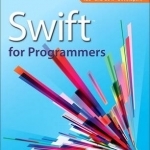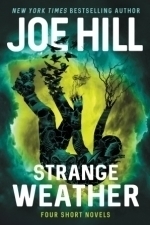
RPN-67 Pro
Productivity and Utilities
App
A dream calculator of the 70's, priced at $1,900 in today's dollars, now on your iPad! RPN-67 Pro...

WinZip Pro - The Leading Zip, Unzip & RAR Tool
Utilities and Productivity
App
Get the world’s #1 zip utility on iOS! Create Zip and Zipx files, encrypt, open Zip, Zipx, 7z, RAR...

Adobe Photoshop Fix
Photo & Video and Productivity
App
Adobe Photoshop Fix enables powerful, yet easy image retouching and restoration on your iPad or...

Capture Pilot
Photo & Video
App
Capture Pilot is a professional photography app from Phase One that allows you to use your iOS...

GrooveMaker 2 FREE
Music and Photo & Video
App
THREE NEW GROOVEMAKER SONG PACKS NOW AVAILABLE – CHILL OUT, ELECTRO FUNK & MINIMAL – NOW OVER 25...

Food Monster - 5000+ Vegan Recipes!
Food & Drink and Lifestyle
App
One Green Planet's Food Monster app gives you instant access to 500 FREE vegan, meatless and...
Acanthea Grimscythe (300 KP) rated Strange Weather in Books
May 16, 2018
SNAPSHOT
“Snapshot,” though a bit lacking in style, is one of two stories in this small collection that I found myself capable of tolerating. I figure it’s because this short tale embodies a sort of Twilight Zone and Night Gallery feel. It read the quickest out of the four stories and I found myself nearly in tears at its conclusion, so the best I can say about it is that I either felt something, or my emotions went bonkers again.
LOADED
The second shorty story in Hill’s collection, “Loaded,” is a bunch of driveling bullshit, for lack of a better word. I’m all about our Second Amendment Rights; I even have a cup that says “Don’t ban guns, ban idiots,” but this story encompasses the stereotypical idea that every gun owner or enthusiast is a batshit crazy blowhard that’s just looking for a reason to go off. I have friends and family that appreciate this machinery, that agree people should under go background and mental wellness checks prior to purchase of a fire arm, but this? This story just adds fuel to a fire that seeks kindling via blame on inanimate objects, rather than the person behind them. The main guy of “Loaded” shows us exactly how restricting gun ownership will fail so hey, better hurry and make it entirely illegal right? Oh, and let’s not get started with the over-saturation of Social Justice Warriorness in this piece. I’m all for equality, but this? This just reeks of extremism in a way that I almost abandoned the book as a whole.
ALOFT
“Aloft” is by far the best in this collection of short stories. An embodiment of the collections title, the main character encounters something unusual while fulfilling a dead friend’s promise and from there, things really take a turn for the bizarre. While I feel Hill gives us a bit too much exposition in this tale, there are many things about it that I feel should be appreciated. For instance, the next time anyone asks me what it’s like to have ulcerative colitis, I’ll probably ask them if they’ve read “Aloft”‘ by Joe Hill, because let’s face it: the torment Aubrey goes through gastrically (is that even a word?) in this story is a pretty damned accurate depiction of the suffering people with Crohn’s and Colitis endure.
RAIN
The final story in Hill’s collection seemed like it could have had a loft of potential. “Rain” further supports the title of the collection when a torrent of crystal nails fall from the sky to impale poor, unexpecting citizens. So what’s the problem then? “Rain” is so fundamentally flawed that it’s just… no. First, Hill is more obsessed with making fun of Trump in this story than the events that occur. This isn’t a bad thing – I absolutely loathe Trump, especially considering his policies may very well shorten my lifespan significantly. “Rain” is more a mockery than the story it could be. At least the twist at the end was fairly amusing, but by that point all I could do is roll my eyes in frustration.
CONCLUSION
Joe Hill’s Strange Weather is probably a poor choice for first time introduction to his work. In fact, it’s almost a deterrent considering it’s the first book by him that I read and I was ecstatic about receiving a review copy. It is with a bit of a heavy heart for the sake of disappointment that I am forced to conclude my review with a largely poor rating. Part of my compliance with FTC guidelines as a reviewer requires that I disclose when I read a free book in exchange for an honest, unbiased review. In this case, I’d like to thank Edelweiss and HarperCollins/William Morrow for this opportunity.

Swift for Programmers
Harvey Deitel and Paul J. Deitel
Book
The professional programmer's Deitel(R) guide to Apple's new Swift programming language for the...

Notebooks for iPhone
Productivity and Business
App
This is the "iPhone only" version of Notebooks. If you want to run it on your iPad, too, you might...

